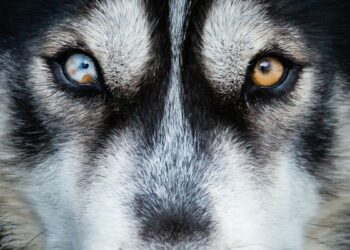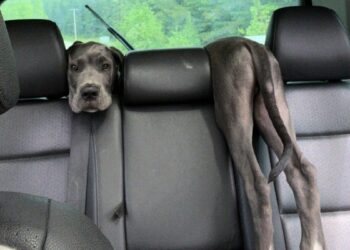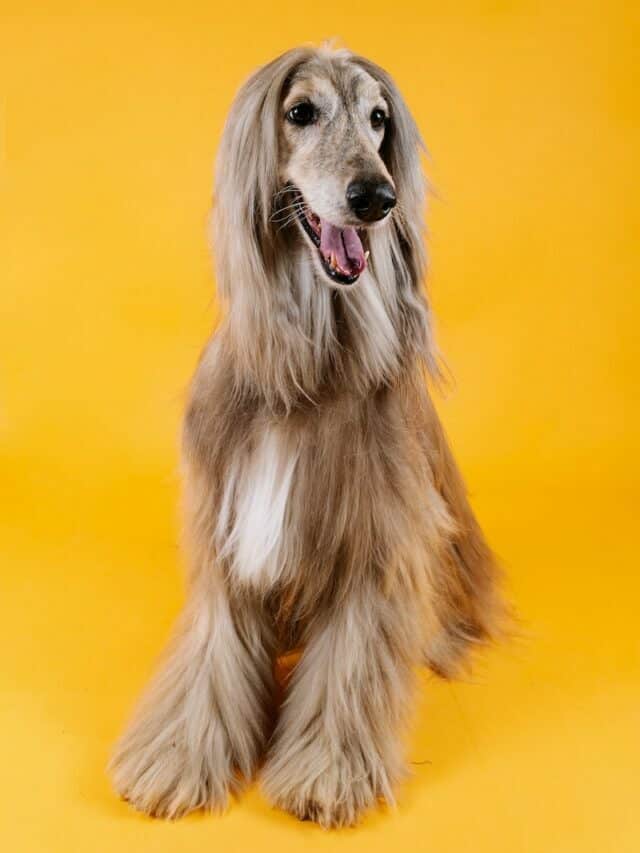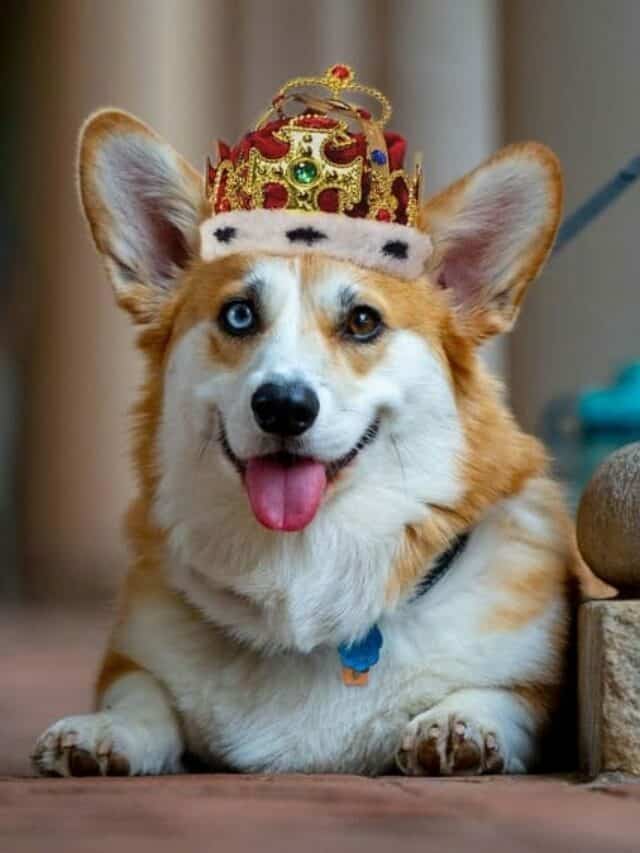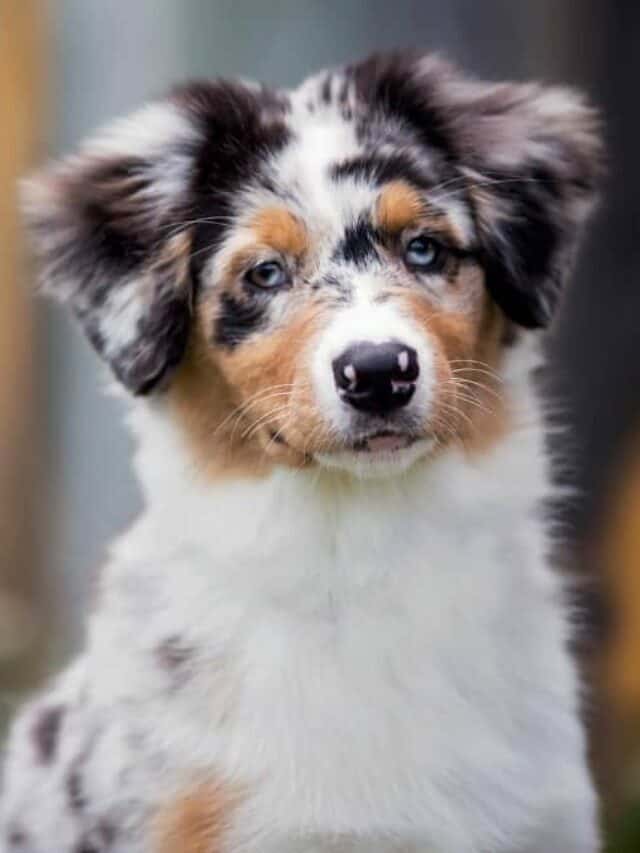Why Is My Dog Losing Hair in Patches?
You’ve noticed it—the unsettling sight of bald spots on your dog’s once lush coat. It’s a concern that leaves you puzzled and anxious. But fret not; you’re not alone. Many pet owners find themselves in a similar predicament, wondering why their dogs are losing patches of hair.
Whether it’s due to allergies, hormonal imbalances, or pressure sores, each type of hair loss has its own set of symptoms and treatment options. This comprehensive guide aims to shed light on the seven most common causes of bald spots and patchy hair in dogs.
1. Allergies: The Hidden Culprit Behind Bald Spots
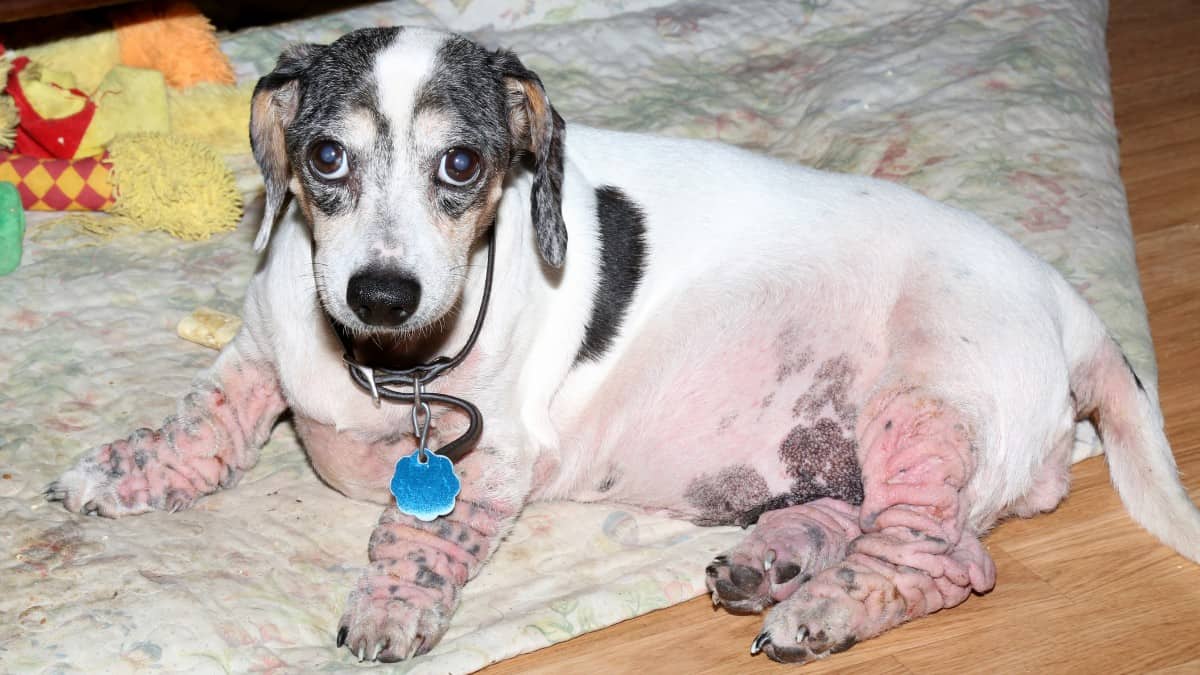
Allergies are one of the most common causes of bald spots in dogs. These can range from flea bites and certain foods to environmental factors like pollen and dust. An allergic reaction often manifests as symptoms like itching, redness, and, of course, hair loss. Identifying and removing the allergen is crucial for effective treatment.
| Allergen | Common Symptoms | Recommended Treatments |
|---|---|---|
| Flea Bites | Itching, Redness | Flea control products, Antihistamines |
| Food | Vomiting, Diarrhea | Hypoallergenic diet, Elimination diet |
| Environmental | Sneezing, Eye Irritation | Antihistamines, Allergy shots |
Managing allergies often involves a combination of treatments, including antihistamines, topical creams, and sometimes even allergy shots. Always consult your vet for a diagnosis and tailored treatment plan.
2. Cushing’s Disease: More Than Just a Hormonal Imbalance
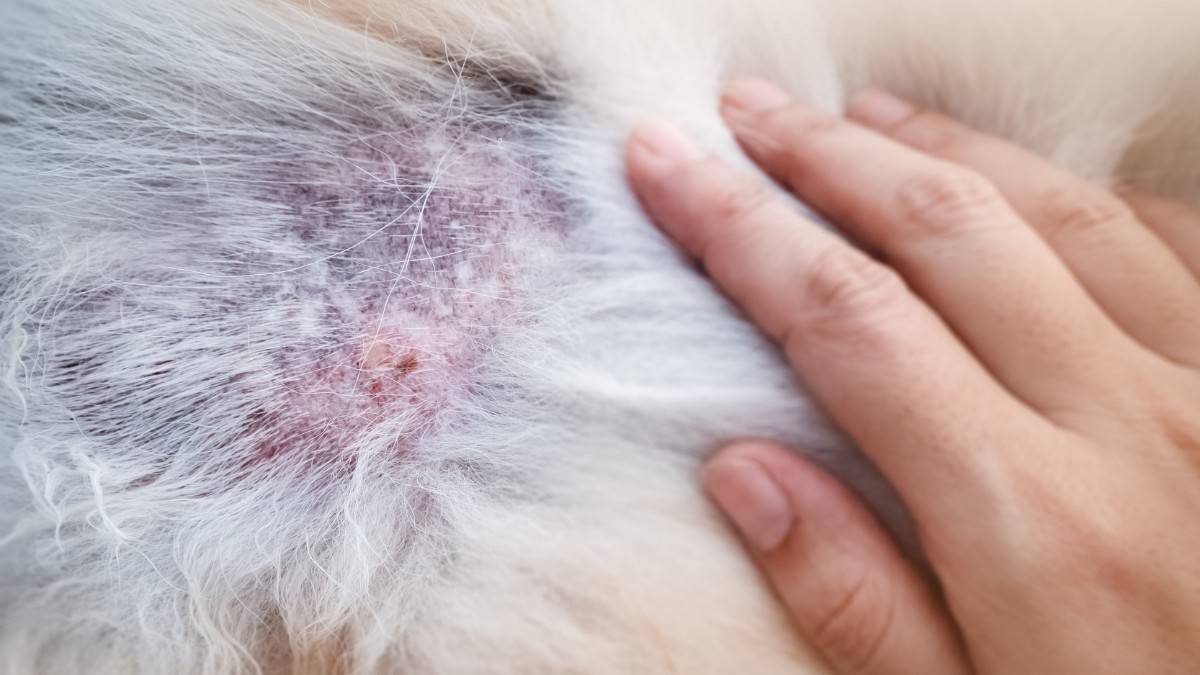
Cushing’s disease is another common cause of bald spots in dogs. This condition is characterized by an overproduction of the hormone cortisol, which can lead to various symptoms including hair loss, increased thirst, and skin infections.
List of Common Symptoms and Treatments for Cushing’s Disease:
Symptoms:
- Hair Loss
- Increased Thirst and Urination
- Frequent Skin Infections
- Oily Skin
Treatments:
- Trilostane
- Mitotane
- Surgery (in rare cases)
Medications like trilostane and mitotane are commonly used to manage the condition. However, these treatments often require ongoing monitoring to ensure they are both effective and not causing any adverse side effects.
3. Pressure Sores: The Silent Aggravators
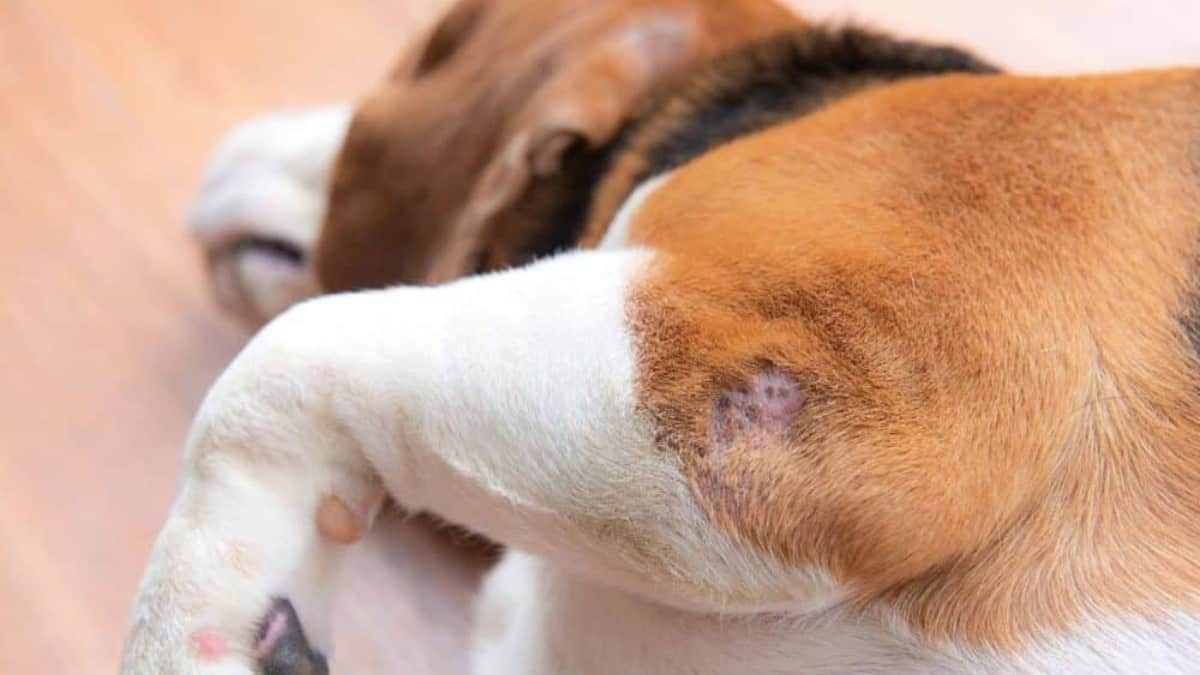
Pressure sores can develop when there’s constant pressure on a specific area of your dog’s body, often leading to hair loss in those regions. These are most commonly found on bony prominences like elbows and hips that come in regular contact with rough or hard surfaces. The symptoms usually include redness, inflammation, and thicker skin.
Common Areas and Treatments for Pressure Sores
| Common Area | Symptoms | Recommended Treatment |
|---|---|---|
| Elbows | Redness, Thickened Skin | Soft Bedding, Topical Creams |
| Hips | Inflammation, Hair Loss | Pressure-Relieving Pads, Antibiotics |
Treatment for pressure sores includes keeping the affected area clean, especially if there are signs of infected skin, and relieving pressure by providing soft bedding or pressure-relieving pads. Topical medications may also be used to treat any infections or inflammation.
4. Genetics: The Blueprint Behind Patches of Hair Loss in Dogs
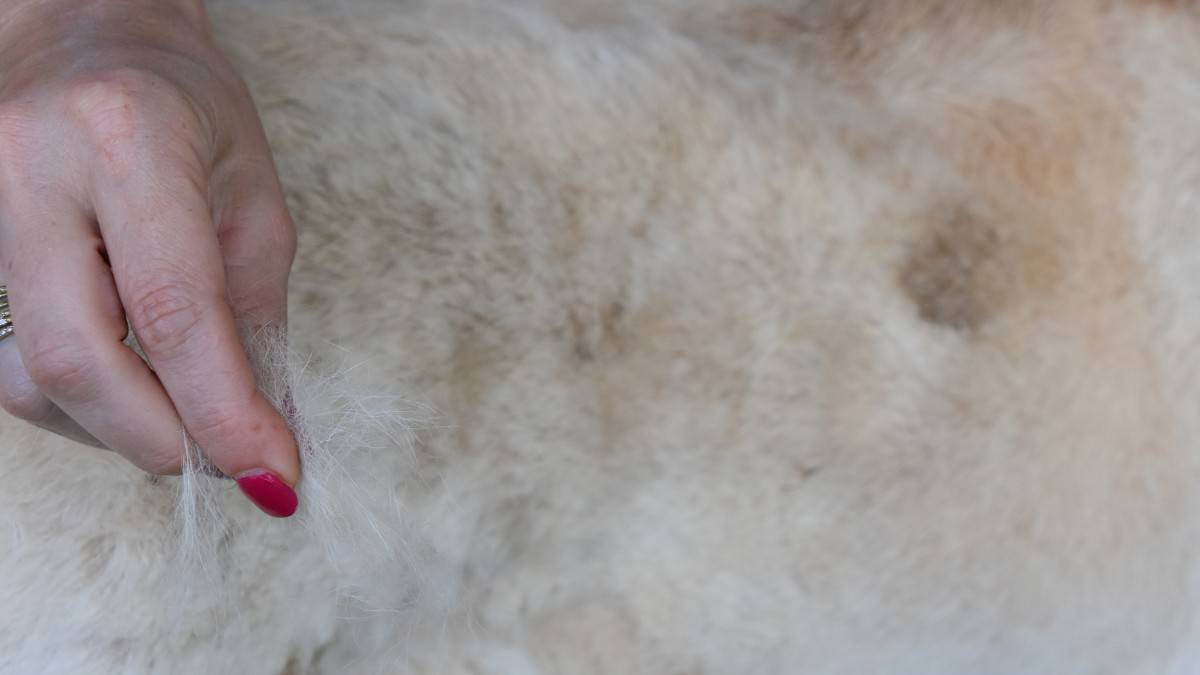
Genetics plays an integral role in your dog’s overall health, including their skin and coat condition. Certain breeds are more genetically predisposed to hair loss and bald spots. For example, Dachshunds and Italian Greyhounds are known for their susceptibility to skin conditions that can lead to hair loss. Understanding your dog’s breed can offer valuable insights into what genetic conditions they might be predisposed to.
Breeds Prone to Genetic Hair Loss
| Breed | Common Genetic Conditions | Recommended Treatments |
|---|---|---|
| Dachshund | Alopecia, Color Dilution | Topical treatments, Specialized shampoos |
| Italian Greyhound | Pattern Baldness | Topical treatments, Omega-3 supplements |
| Doberman Pinscher | Follicular Dysplasia | Specialized shampoos, Dietary supplements |
| Chihuahua | Black Hair Follicular Dysplasia |
Genetic testing is becoming increasingly popular among pet owners. These tests can identify specific genetic markers associated with various conditions, including those that affect the skin and coat. By knowing what to look out for, you can take proactive steps to manage your dog’s condition effectively.
5. Infection or Infestation: The Unseen Enemies
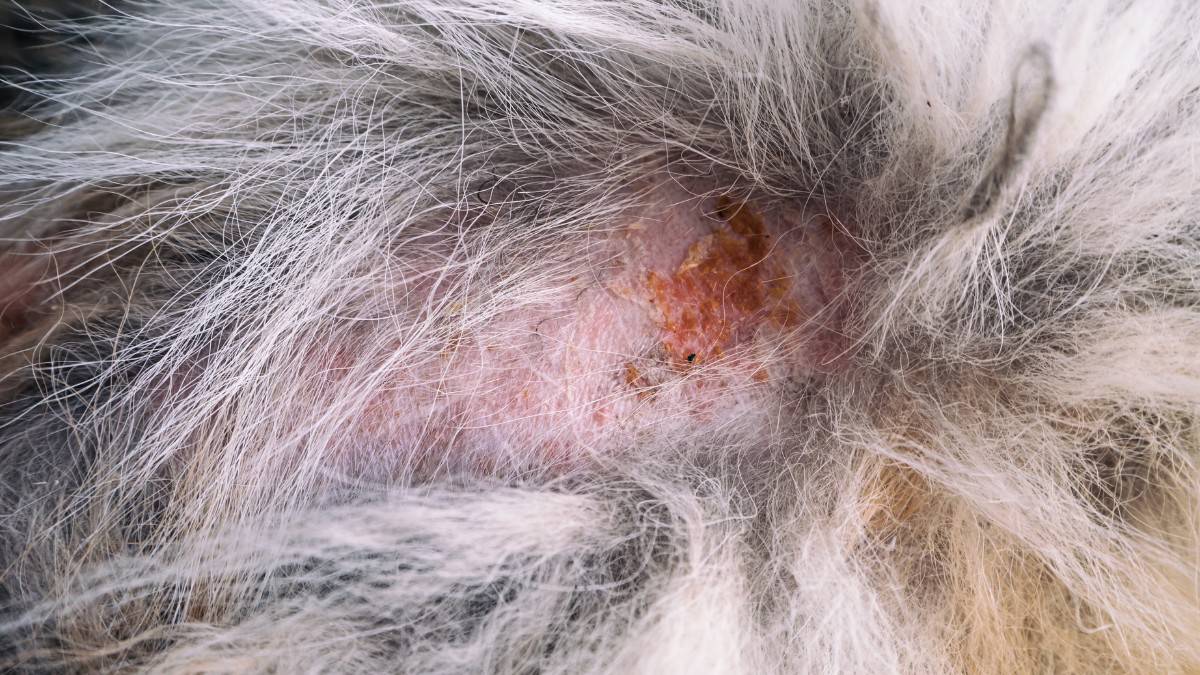
Infections and infestations are often overlooked but can be a significant cause of bald spots in dogs. Ringworm, a type of fungus, can lead to circular patches of hair loss. Fleas, on the other hand, can cause widespread itching and subsequent hair loss.
List of Common Infections and Infestations:
- Ringworm Fungus
- Flea Infestation
- Bacterial Infections
- Mite Infestation (Scabies, Demodex)
Common Treatments
- Antifungal medications
- Antibiotics
- Anti-parasitic drugs
If you notice symptoms like itching, flaky skin, redness, circular or irregular hair loss, consult your vet for a proper diagnosis and treatment plan. Treatments may include antifungal medications, antibiotics, or anti-parasitic drugs.
6. Foreign Body Reaction: When External Elements Attack
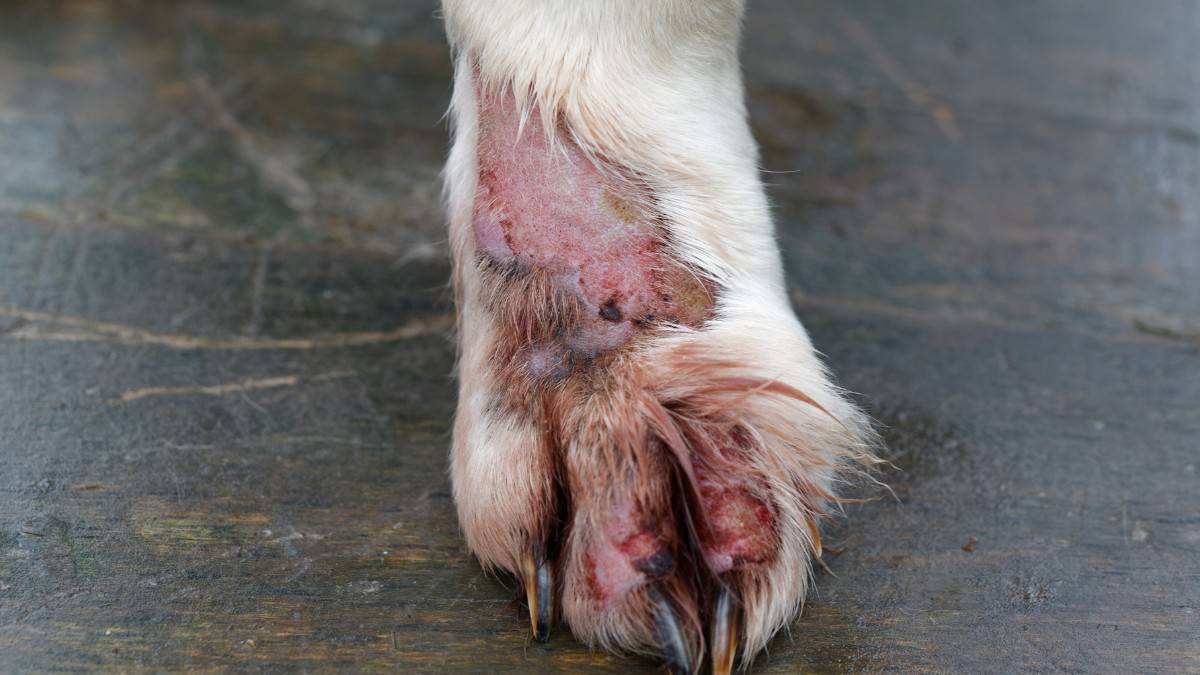
Foreign body reactions can occur when your dog comes into contact with external substances like glass, thorns, or even certain fabrics. These foreign objects can irritate the skin, leading to hair loss and bald spots. Common signs to look out for include localized redness, swelling, and discomfort.
Common Foreign Objects and Treatment
| Foreign Object | Typical Reaction | Recommended Treatment |
|---|---|---|
| Glass | Localized Redness | Removal, Antibiotics |
| Thorns | Swelling | Removal, Anti-inflammatory Medication |
| Fabric | Irritation | Removal, Topical Cream |
Treatment often involves removing the foreign object and administering anti-inflammatory medications to reduce irritation. In some cases, antibiotics may be prescribed to prevent infection.
7. Hypothyroidism: More Than Just a Slow Metabolism
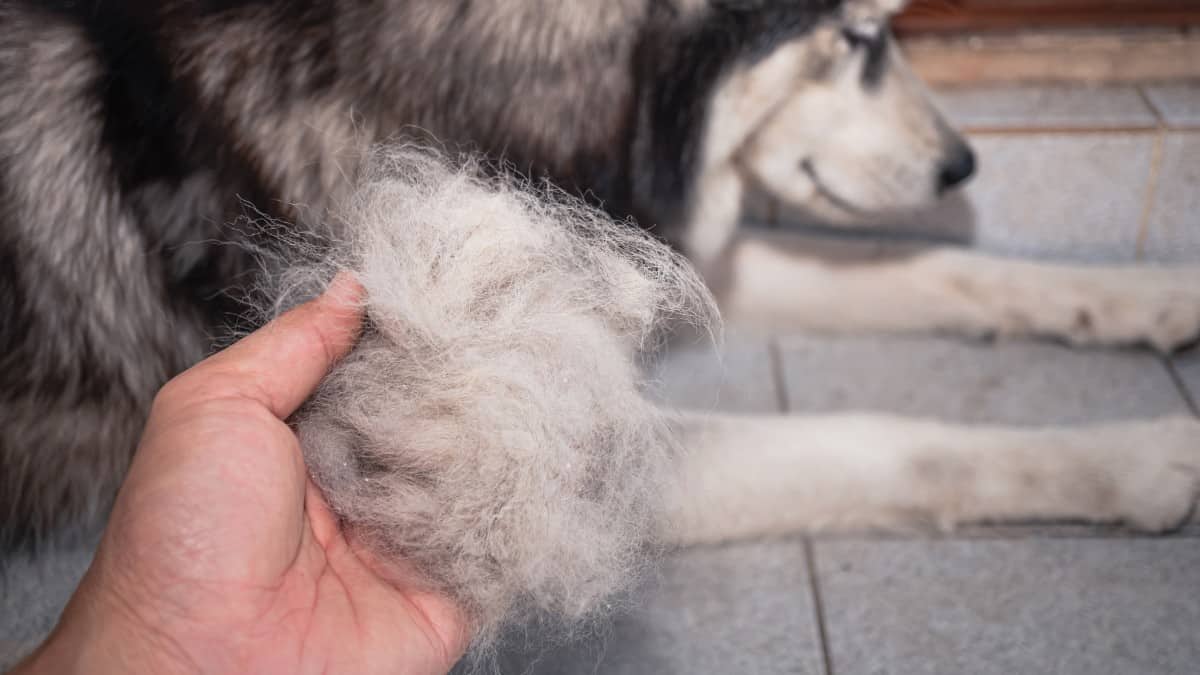
Hypothyroidism in dogs is often an overlooked cause of hair loss. This condition occurs when the thyroid gland doesn’t produce enough thyroid hormone, leading to symptoms like lethargy, weight gain, and hair loss.
List of Symptoms and Treatments for Hypothyroidism:
Symptoms:
- Lethargy
- Weight Gain
- Hair Loss
- Dry Skin
Treatments:
- Hormone Replacement Therapy
- Regular Monitoring
- Dietary Adjustments
Consult your vet for a comprehensive treatment plan tailored to your dog’s needs, which may include hormone replacement therapy and regular monitoring of thyroid levels.
At-Home Care: A Comprehensive Guide to Nurturing Your Dog’s Skin and Coat
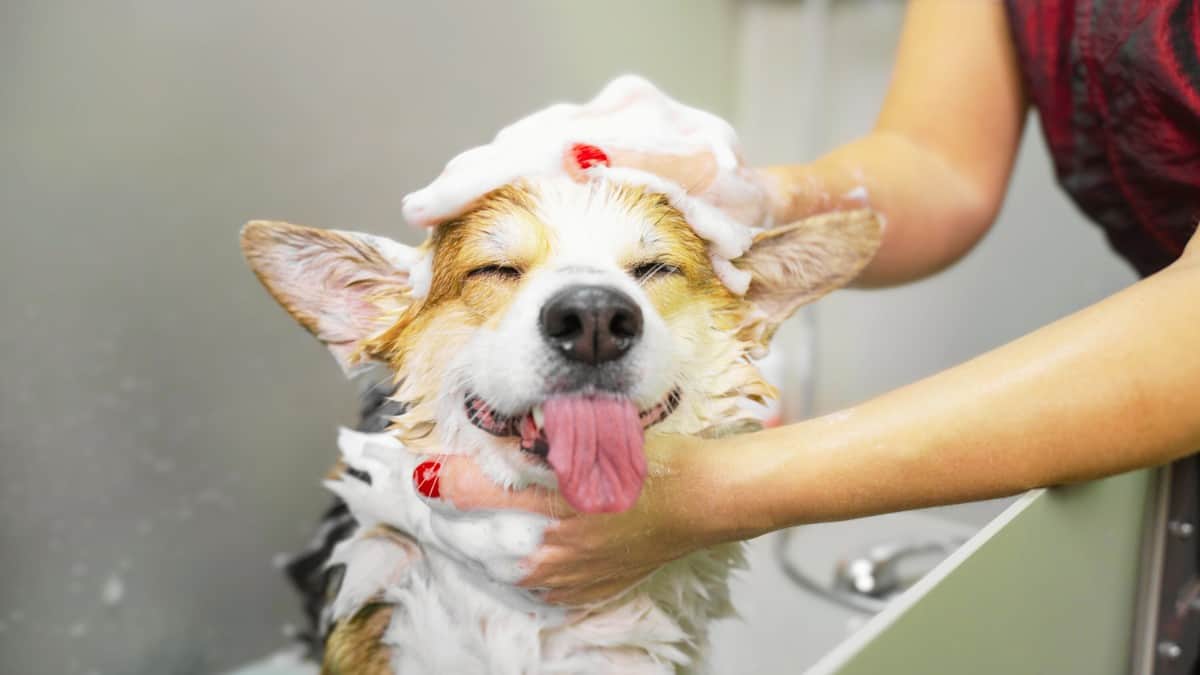
The Importance of Regular Grooming
Regular grooming is about more than just keeping your dog looking good; it’s a fundamental aspect of their overall health. Brushing your dog’s coat not only removes dead skin and loose hairs but also stimulates blood circulation to the skin, which can encourage new hair growth. For optimal results, choose a brush that’s appropriate for your dog’s specific coat type.
Types of Brushes and Their Uses
| Type of Brush | Best For | Benefits |
|---|---|---|
| Slicker Brush | Long, Curly Coats | Removes Tangles |
| Bristle Brush | Short, Smooth Coats | Adds Shine |
| Pin Brush | Silky, Medium-Length Coats | Gentle Detangling |
| Rubber Brush | Short, Dense Coats | Massages Skin, Removes Loose Fur |
Specialized Shampoos for Targeted Treatment
If your dog is dealing with specific skin issues like infections or allergies, specialized medicated shampoos can offer targeted relief. These shampoos often contain ingredients such as oatmeal, hydrocortisone, or antifungal agents that can help alleviate symptoms. However, it’s crucial to consult your vet before using any medicated products to ensure they’re suitable for your dog’s condition.
Nutrition: The Building Blocks of a Healthy Coat
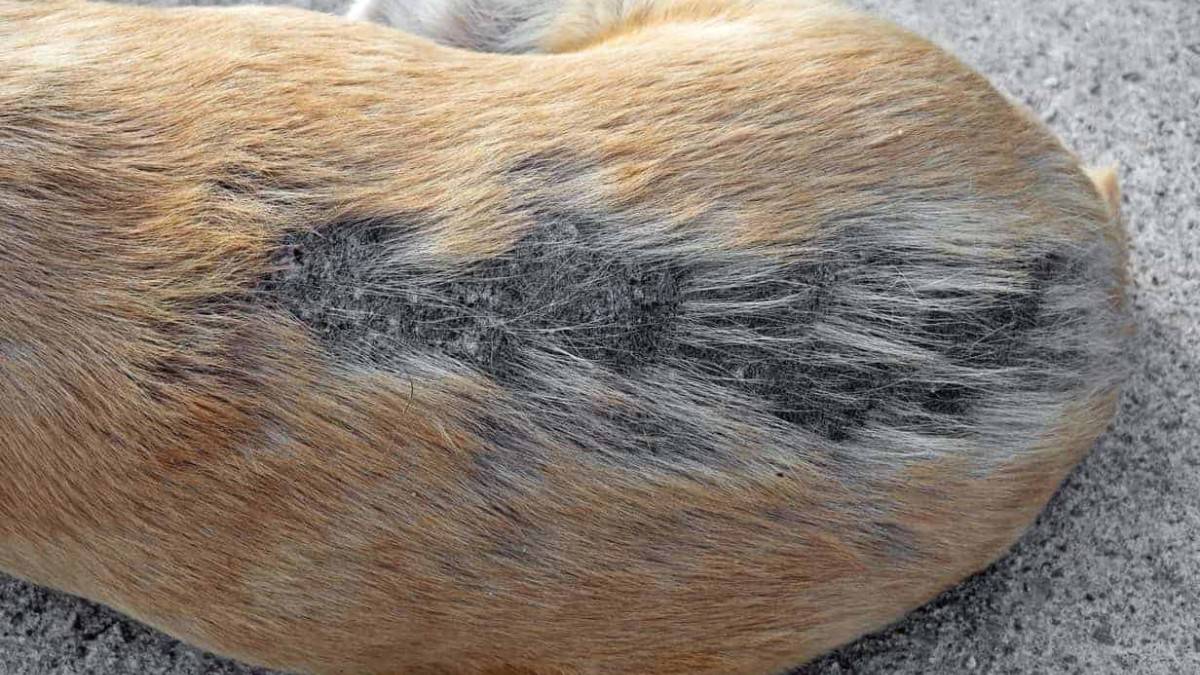
A well-balanced diet is essential for maintaining your dog’s skin and coat health. Foods rich in Omega-3 and Omega-6 fatty acids, like fish oil or flaxseed, can be particularly beneficial. Always consult your vet for personalized dietary recommendations.
List of Nutrients Beneficial for Skin and Coat:
- Omega-3 Fatty Acids
- Omega-6 Fatty Acids
- Vitamin E
- Biotin
- Zinc
Stress Management: The Emotional Connection to Physical Well-being
Stress can have a tangible impact on your dog’s physical health, including their skin and coat. Maintaining a consistent routine, providing ample exercise, and offering a comfortable living environment can go a long way in reducing stress. Consider using calming aids like pheromone sprays or diffusers to help create a more relaxed atmosphere.
Environmental Cleanliness: Your Dog’s Living Space Matters
Your home environment can be a breeding ground for allergens like dust and mold, which can exacerbate skin issues. Make it a habit to clean your dog’s bedding and play areas regularly. Air purifiers can also improve indoor air quality, reducing potential irritants.
Cleaning Checklist for a Healthy Environment
| Area to Clean | Frequency | Tips |
|---|---|---|
| Dog’s Bedding | Weekly | Use Hypoallergenic Detergent |
| Play Areas | Bi-Weekly | Disinfect Toys and Surfaces |
| Food Bowls | Daily | Use Stainless Steel or Ceramic Bowls |
Topical Solutions: Quick Fixes for Minor Issues
For localized problems like small bald spots or minor skin irritations, topical treatments such as creams or ointments can offer quick relief. These should be used as supplementary treatments and not as a replacement for addressing the root cause of the issue. Always consult your vet before applying any new topical treatments.
By incorporating these at-home care strategies into your routine, you’re not just addressing symptoms; you’re contributing to your dog’s overall well-being. While these tips can be highly effective, they should not replace professional veterinary advice, especially for persistent or severe conditions.
When to See a Vet: Your Guide to Recognizing Warning Signs
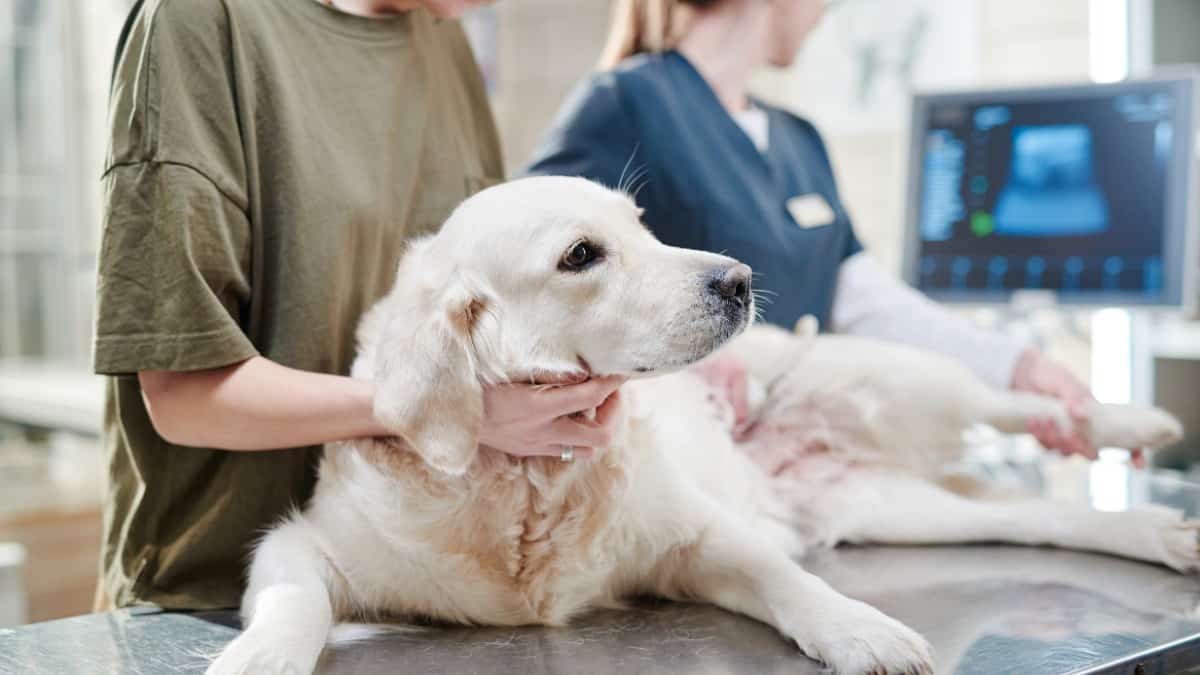
Knowing when to seek professional veterinary care for your dog’s bald spots is crucial for effective treatment and overall well-being. Here are some key signs that it’s time to consult a vet:
Persistent Hair Loss: A Sign You Can’t Ignore
If you’ve tried various home remedies and treatments but your dog’s hair loss continues, it’s time to seek professional help. Persistent hair loss can indicate underlying health issues that require a vet’s expertise.
Skin Irritations: More Than Just a Minor Nuisance
Red, inflamed, or irritated skin isn’t just uncomfortable for your dog; it can also be a symptom of a more severe condition. If these signs accompany hair loss, a vet visit is in order.
Excessive Scratching: When It’s Not Just a Flea Problem
While all dogs scratch occasionally, excessive scratching that leads to bald spots or skin lesions is a red flag. This could be a sign of allergies, infections, or other skin conditions that need medical attention.
Bad Odor: A Smell That Signals Trouble
An unusual or foul odor from your dog’s skin or coat often indicates an infection. This symptom should not be ignored and warrants immediate veterinary consultation.
Signs and Symptoms That Require a Vet Visit
| Signs and Symptoms | Possible Underlying Condition | Immediate Action Required |
|---|---|---|
| Persistent Hair Loss | Allergies, Hormonal Imbalance | Yes |
| Irritated Skin | Infections, Allergies | Yes |
| Excessive Scratching | Parasites, Skin Conditions | Yes |
| Bad Odor | Infections, Infected Skin | Yes |
Understanding these common causes can help you take proactive steps in managing your pet’s health, particularly when it comes to preventing loss of hair and treating bald spots. Early intervention is key to effective treatment, so don’t hesitate to consult your vet when you notice these symptoms. Your furry friend relies on you to take action, so be vigilant and proactive in their care.








